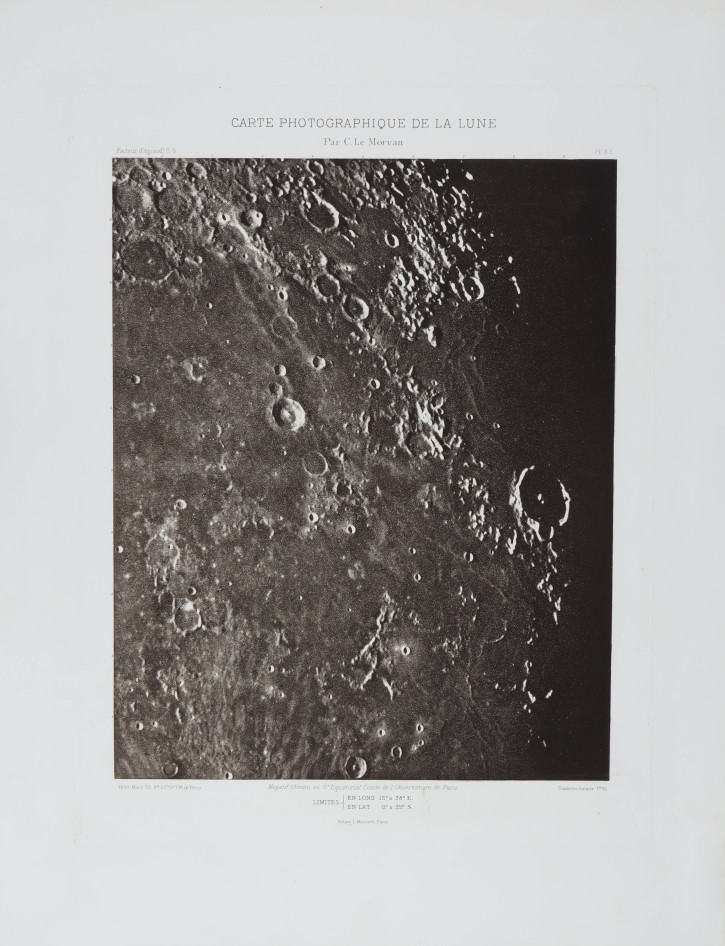Carte Photographique de la Lune 1
C. LE MORVAN (photographer);
L. MASSARD (editor)
Paris, March 22, 1899.
Heliogravure on vellum paper.
Good condition. Full margins.
One of the first discoveries that came with the telescope was the discovery of lunar craters, elements that today we inescapably associate with lunar geography but that cannot be perceived with the naked eye.
Lunar craters have been produced by the impact of meteorites on the lunar surface, which barely has a protective atmosphere. Most of these craters were formed in an early phase of the Moon, about 4 billion years ago, but they continue to occur today. The size of the craters are very diverse, ranging from millimeter sizes to the 2,500km South Pole-Aitken impact basin. Their shape also varies depending on the impact: the largest ones usually have central mountains due to the rebound of the meteorite on the surface. Others show stepped terraces or contain smaller craters inside.

